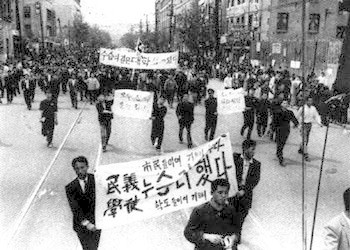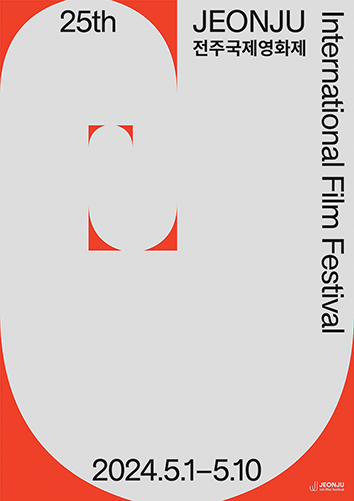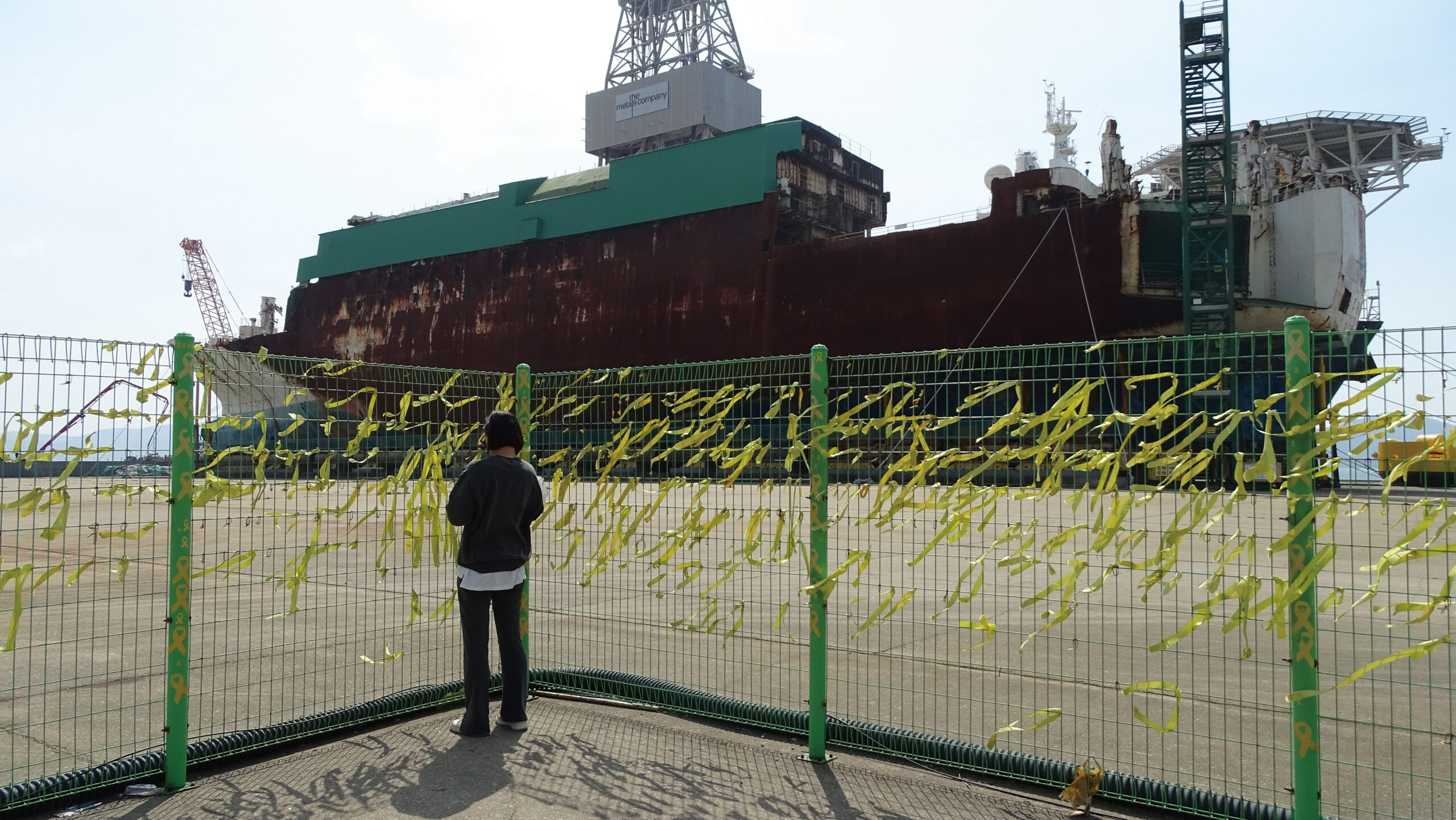The 4.19 Student Revolution
Originally written by Shin Sang-soon
(Originally appearing in the April 2006 issue of the Gwangju News.)
As April 19 is the annual observance of Korea’s 4.19 Student Revolution, we thought it fitting and educational to remember the occasion by running this 2006 article by Prof. Shin Sang-soon, longtime contributor to the Gwangju News on a multitude of things Korean. — Ed.
Koreans remember major historical events in the modern history of Korea by naming them with the month and day (in numbers) as part of the event name, for example, the 3.1 Independence Movement, the 4.19 Student Revolution, and the 5.16 Military Revolution.
The Non-Immediate Causes of the Student Revolution
The seven-year period after the end of the actual fighting of the Korean War on July 27, 1953, up to 1960, was a period of political and social turbulence in Korea. After the devastation of the country during the three-year war (1950–1953), South Korea was dependent on foreign aid for survival. Through the mismanagement of foreign aid, the Syngman Rhee government and his Liberal Party lost the people’s support. In addition, a series of political and legislative maneuvers by Rhee, revealing an ever-increasing tilt towards despotism, played a decisive role in his loss of popularity.
In 1952, while the war was still raging, Rhee forced through the legislature a constitutional amendment to elect the president popularly, rather than by the legislators. This was accomplished by proclaiming martial law around the wartime capital of Busan and arresting and intimidating opposition legislators.
In 1954, in anticipation of the termination of his two-term presidency in 1956, Rhee again forced through the legislature another constitutional amendment that nullified the two-term limitation clause on the presidency so that he could run for president indefinitely.
The presidential/vice-presidential election of May 1956, with the opposition Democratic candidate Shin Ik-hee’s sudden death on a campaign trip, ended in Rhee’s election as president and Chang Myon of the opposition Democratic Party as vice-president. This resulted in a strange political cohabitation of rival parties. The fact that the dead candidate garnered twenty percent of the votes cast and the election of the opposite party’s candidate for the vice-presidency was indicative of the ruling Liberal Party’s unpopularity – and Syngman Rhee’s, as well. Ensuing abnormal legislative measures such as the amendment of the security law and the suppression of the press added to the government’s unpopularity.

The Immediate Cause of the Student Revolution
Analyzing the 1956 presidential/vice-presidential election, the ruling Liberal Party realized that the forthcoming 1960 presidential election could not be won through a normal process. They contrived a series of blatant and shameless devices that defy description. One example will suffice: the forming of three-man or five-man bands to show one’s ballot to one another, showing one’s choice of the pro-government candidate. Home Affairs Minister Choi Inkyu sent out the infamous directives to be carried out by all lower administrative units. In addition, the government advanced the scheduled election date by two months to March 15th for fear that the opposition Democratic Party candidate Cho Byong-ok might return from the U.S. after medical treatment there. Unfortunately, Cho died in the U.S. just before the election. Two days after the election, the government announced their victory with over 80 percent support of the vote, but most people were skeptical of the election results with rumors of fraudulent schemes by the government swirling about. The government’s scheme did not go uncovered. The secret scheme was exposed by a righteous policeman aglow with a sense of justice by handing the directives over to the opposition Democratic Party.
The people’s reaction to the fraudulent March 15 election was immediate. On the same day, Masan students took to the streets demanding that a new election be held. This was met with a ruthless attack by the riot police, armed with teargas guns and clubs, and allied with political thugs. Many students were wounded and some went missing. Prior to this, on February 28, all Daegu students were ordered to attend school, in spite of it being a Sunday, to prevent them from attending an opposition party political rally. This angered the students, and they took to the streets, demanding that the political use of students be discontinued. Thus, student demonstrations spread all over the country in early March.
On April 11, the body of a missing student, Kim Ju-yeol of Masan Commercial High School, was found floating in Masan Harbor with a teargas cartridge stuck in his eye. This was apparently the work of the riot police. This news was enough to make the people’s anger and indignation boil over. They demanded punishment of the murderous police and a new election.
On April 18, after a peaceful and orderly demonstration demanding a new election was held in front of the National Assembly building, Korea University students, returning to their campus in an orderly manner, were attacked by scores of thugs. Many were seriously injured, and the news of the incident added fuel to the fire.
On the fateful day of April 19, almost all students in Seoul, as well as the public, turned out in front of the government administrative building demanding the president’s resignation and marched towards the presidential mansion against the police order to stop and disperse. Martial law was declared over Seoul at 1 p.m. and troops were called in. At 4 p.m., martial law was extended to Busan, Daegu, and Gwangju. At 5 p.m., martial law was raised to the emergency level, and the police guarding the presidential mansion started firing at the advancing demonstrators, killing 183 and wounding 6,259. Fortunately, the martial law troops kept a neutral stance and showed a rather sympathetic attitude towards the demonstrators.
On April 25 at 5 p.m., some 300 college professors from 27 universities and colleges ventured to demonstrate under the stringent emergency martial law, demanding that the government recompense the students for their blood shed. This was the climax that dealt the final blow to the government.
On April 26 at 10 a.m., President Rhee announced his resignation from the presidency “if the people want.” Thus ended the twelve-year Rhee regime, with Rhee going into exile in Hawaii and the family suicide of his running mate, Lee Ki-poong.
The Significance of the 4.19 Student Revolution
From the beginning, it was not a struggle to take over a regime nor was the purpose to change the social system in order to realize a certain political ideology. There was no intervention by any political power, nor was there any systematic campaign strategy or objective. The students’ genuine sense of social justice drove them to mass action to remedy the injustice incurred at the hands of the established generation. Their initial slogan after the March 15 presidential election was “Hold the election again!” It is said that bringing down a legitimate government by the power of empty-handed students was the first in history. Thus, the 4.19 Student Revolution, at the threshold of the 1960s, opened a decade of youth uproar in many countries: in Japan in 1962; in France in 1968; and in the U.S. on issues of civil rights, the Bay of Pigs, military intervention in Vietnam, the military draft of young men, etc.
The students’ genuine sense of social justice drove them to mass action to remedy the injustice incurred at the hands of the established generation.
The chaotic internal situation after the collapse of the Rhee regime in April 1960 paved the way to a military takeover in May 1961.
The Author
Shin Sang-soon (1922–2011) was a longtime professor of English education at Chonnam National University. After his retirement, he authored “The Korean Way” under the penname “2Ys,” a column in the Gwangju News that ran from 2002 to 2010. Prof. Shin was also a senior advisor to the Gwangju International Center.







